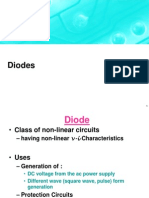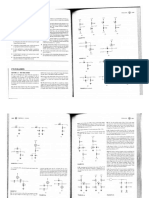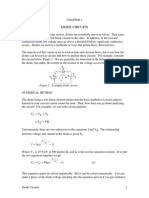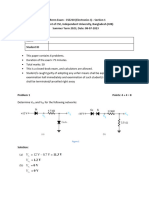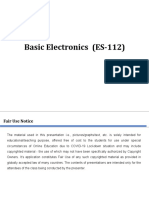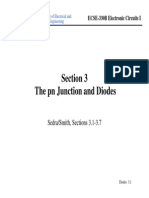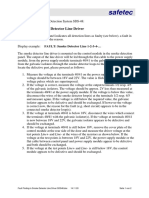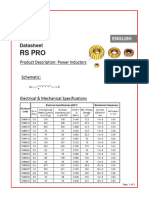Diode Math Problems
Example 6.2. An a.c. voltage of peak value 20 V is connected in series with a silicon diode and load
resistance of 500 Ω. If the forward resistance of diode is 10 Ω, find:
(i) peak current through diode and (ii) peak output voltage
What will be these values if the diode is assumed to be ideal?
1
�Example 6.5. Determine the current I in the circuit shown in Fig. 6.12 (i). Assume the diodes to
be of silicon and forward resistance of diodes to be zero.
Example 6.6. Find the voltage VA in the circuit shown in Fig. 6.13 (i). Use simplified model.
2
�Example 6.7. Find VQ and ID in the network shown in Fig. 6.14 (i). Use simplified model.
Example 6.8. Determine current through each diode in the circuit shown in Fig. 6.15 (i). Use simplified
model. Assume diodes to be similar.
Comments. Note the use of placing the diodes in parallel. If the current rating of each diode is 20 mA
and a single diode is used in this circuit, a current of 28.6 mA would flow through the diode, thus
damaging the device. By placing them in parallel, the current is limited to a safe value of 14.3 mA for
the same terminal voltage.
3
�Example 6.9. Determine the currents I1, I2 and I3 for the network shown in Fig. 6.16(i). Use simplified
model for the diodes.
Example 6.10. Determine if the diode (ideal) in Fig. 6.17 (i) is forward biased or reverse biased.
4
�Example 6.11. Determine the state of diode for the circuit shown in Fig. 6.18 (i) and find ID and
VD. Assume simplified model for the diode.
5
�Example 2.9 Determine I, V1, V2, and V o for the series dc configuration of Fig. 2.25.
Solution:
6
�Example 2.11 In this example there are two LEDs that can be used as a polarity detector. Apply a
positive source voltage and a green light result. Negative supplies result in a red light. Packages of such
combinations are commercially available.
Find the resistor R to ensure a current of 20 mA through the “on” diode for the configuration of Fig.
2.30. Both diodes have a reverse breakdown voltage of 3 V and an average turn-on voltage of 2 V.
Solution:
Example 2.13 Determine the currents I1, I2, and ID2 for the network of Fig. 2.37.
7
�*8. Determine 𝑉𝑜 and 𝐼𝐷 for the networks of Fig. 2.158.
Solution:
8
�*9. Determine 𝑉𝑜1 and 𝑉𝑜2 for the networks of Fig. 2.159.
Solution:
12. Determine 𝑉𝑜1 , 𝑉𝑜2 , and I for the network of Fig. 2.162.
9
�*13. Determine 𝑉𝑜 𝑎𝑛𝑑 𝐼𝐷 for the network of Fig. 2.163.
Solution:
Question: Determine the V and I of the following circuit.
10
�Solution:
In the given circuit, the diodes will only conduct if the voltage at their anode is greater than the voltage
at their cathode. The diode connected to the +3V source will have the highest potential and will be
forward-biased, allowing current to flow through it. The other two diodes connected to +2V and +1V
sources will be reverse-biased since the voltage at their cathodes will be higher than their anodes, thus
they will not conduct.
The voltage at the output (V) will be equal to the voltage of the conducting diode (+3V) minus the
forward voltage drop across the diode. Assuming a standard silicon diode with a forward voltage drop
of approximately 0.7V, the output voltage V can be calculated as:
V = 3V - 0.7V = 2.3V
Now, using Ohm's law, the current (I) flowing through the 1kΩ resistor can be calculated as:
I = V/R = 2.3V / 1000Ω = 0.0023A or 2.3mA
Therefore, the output voltage V is 2.3V and the current I is 2.3mA.
Question: Determine the V and I of the following circuit.
Solution:
11






